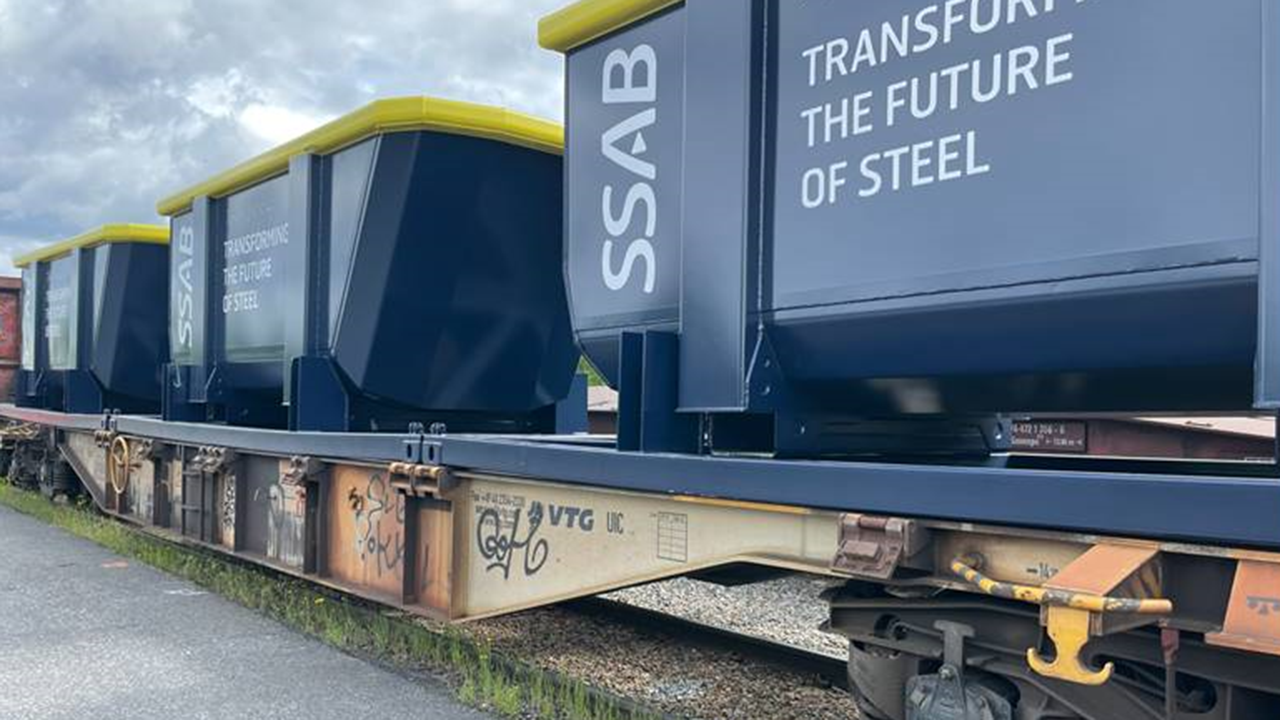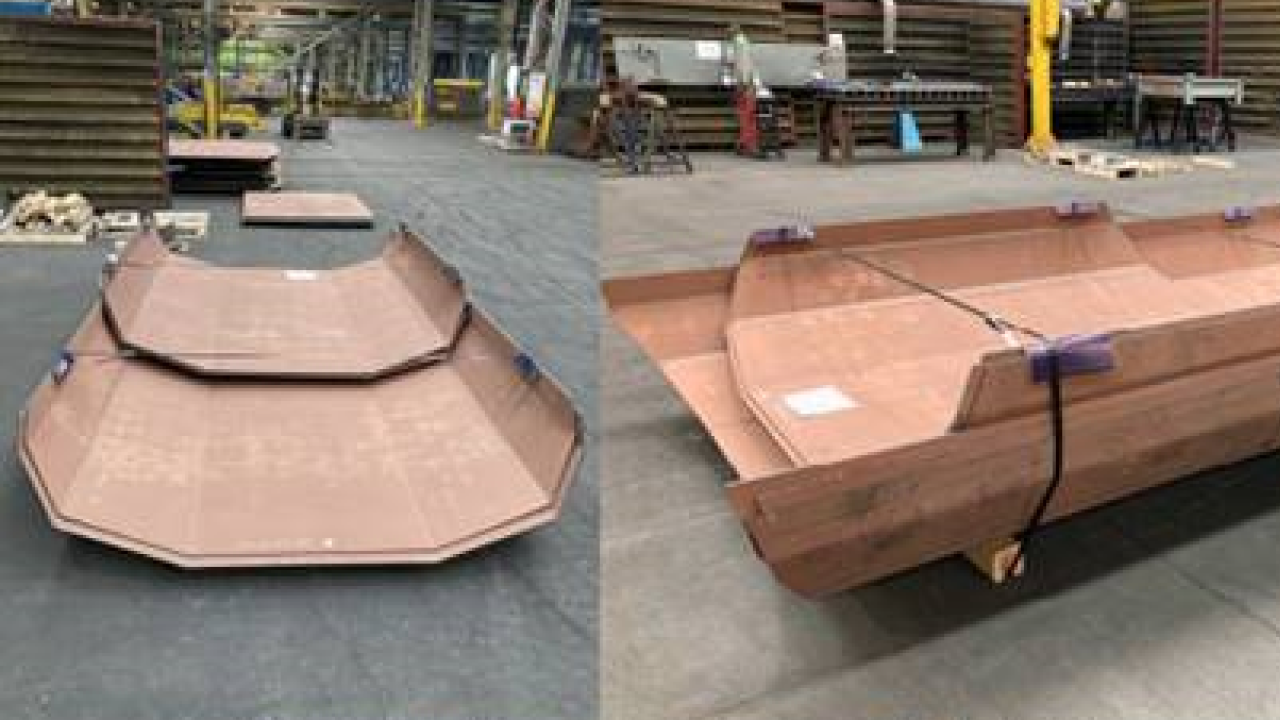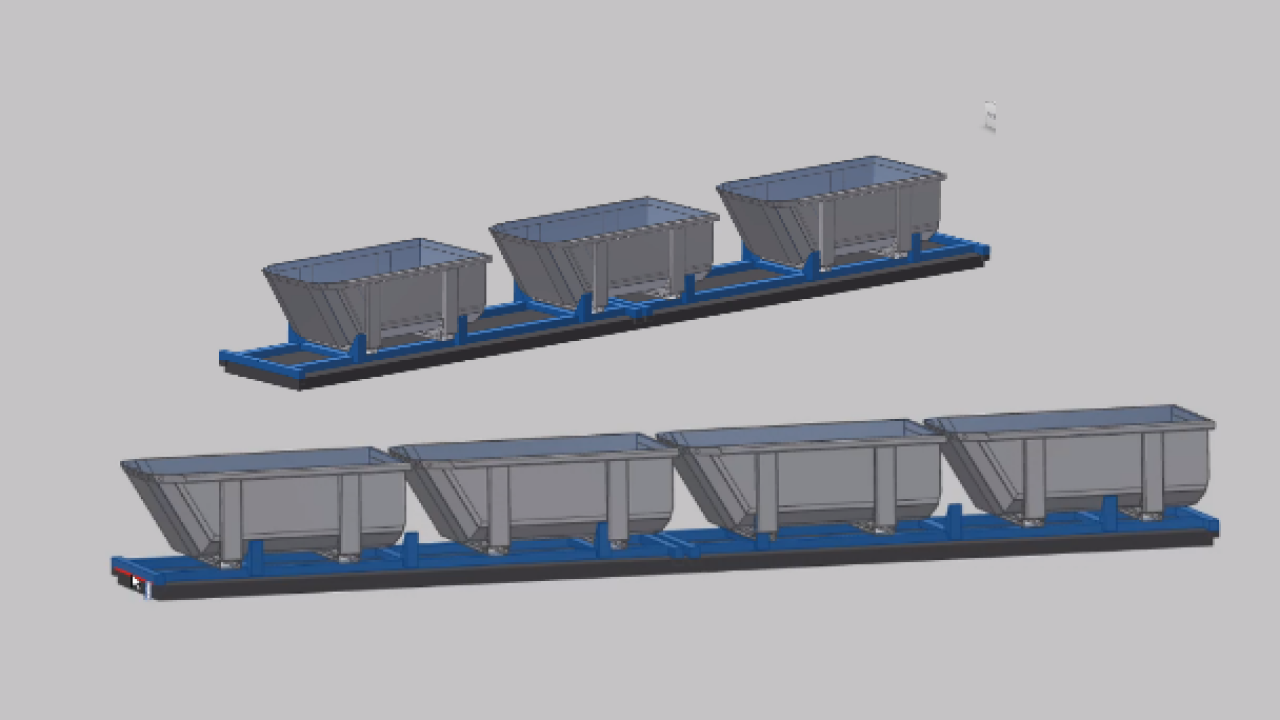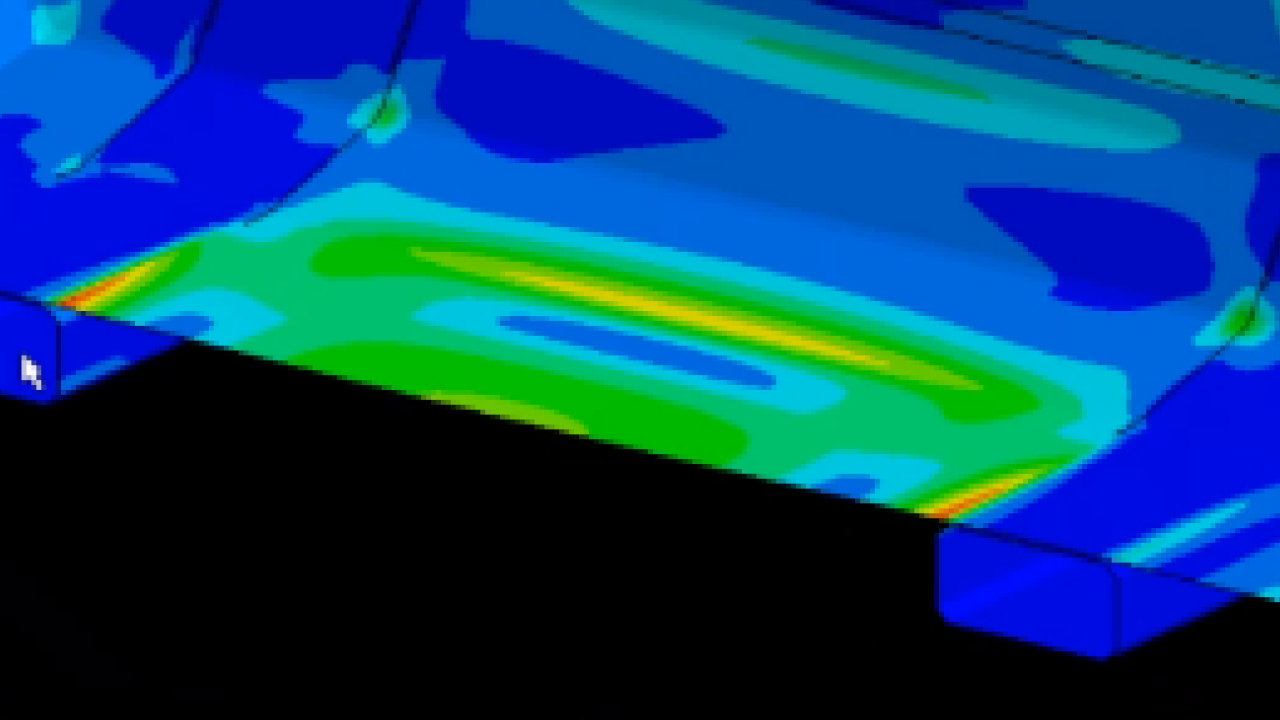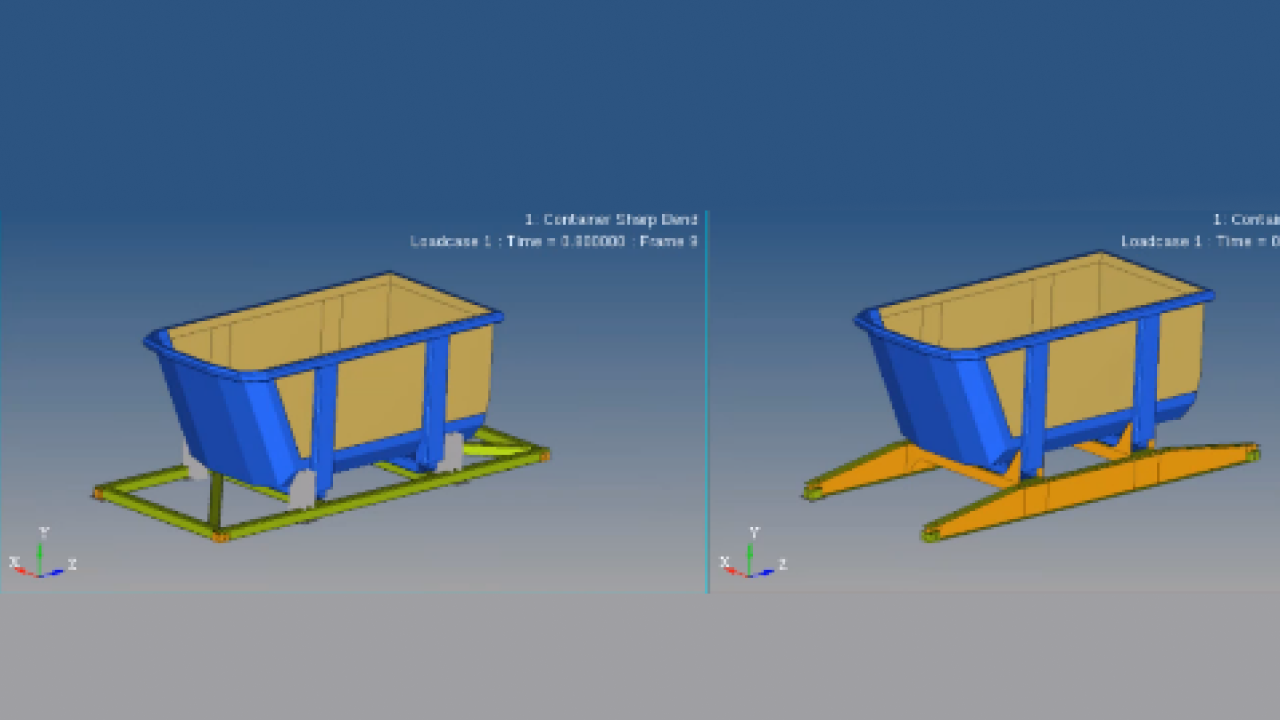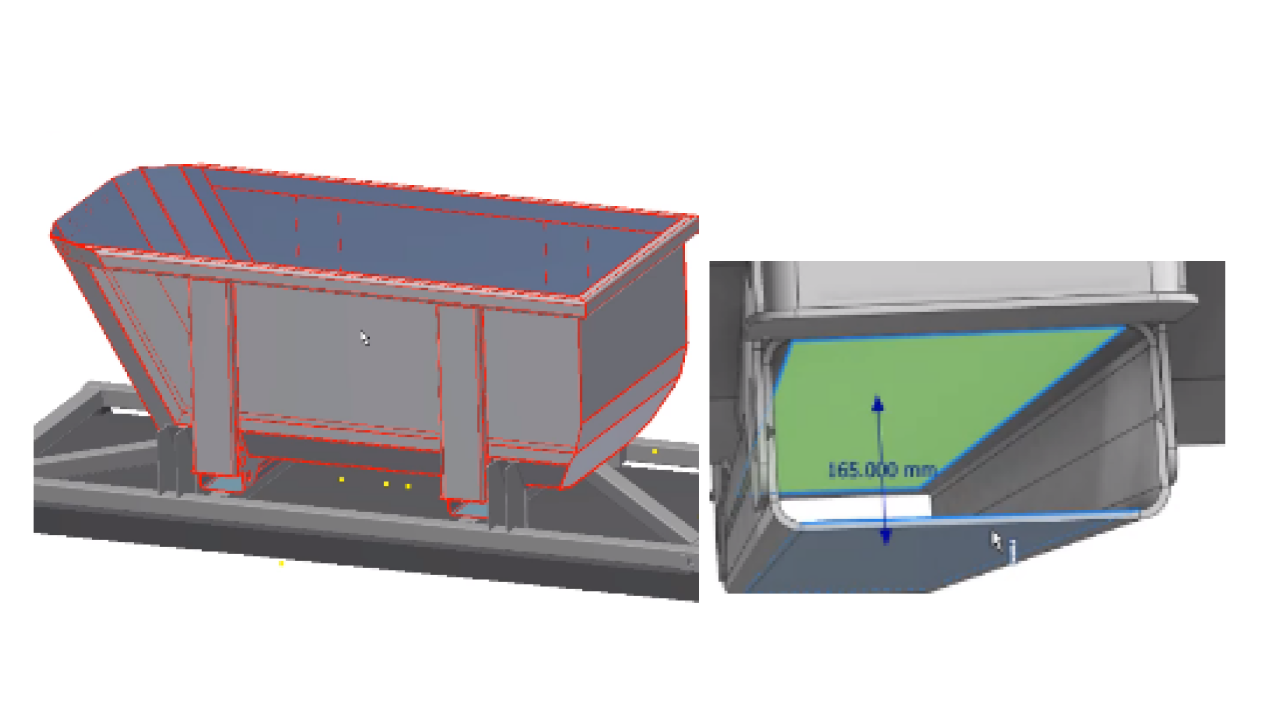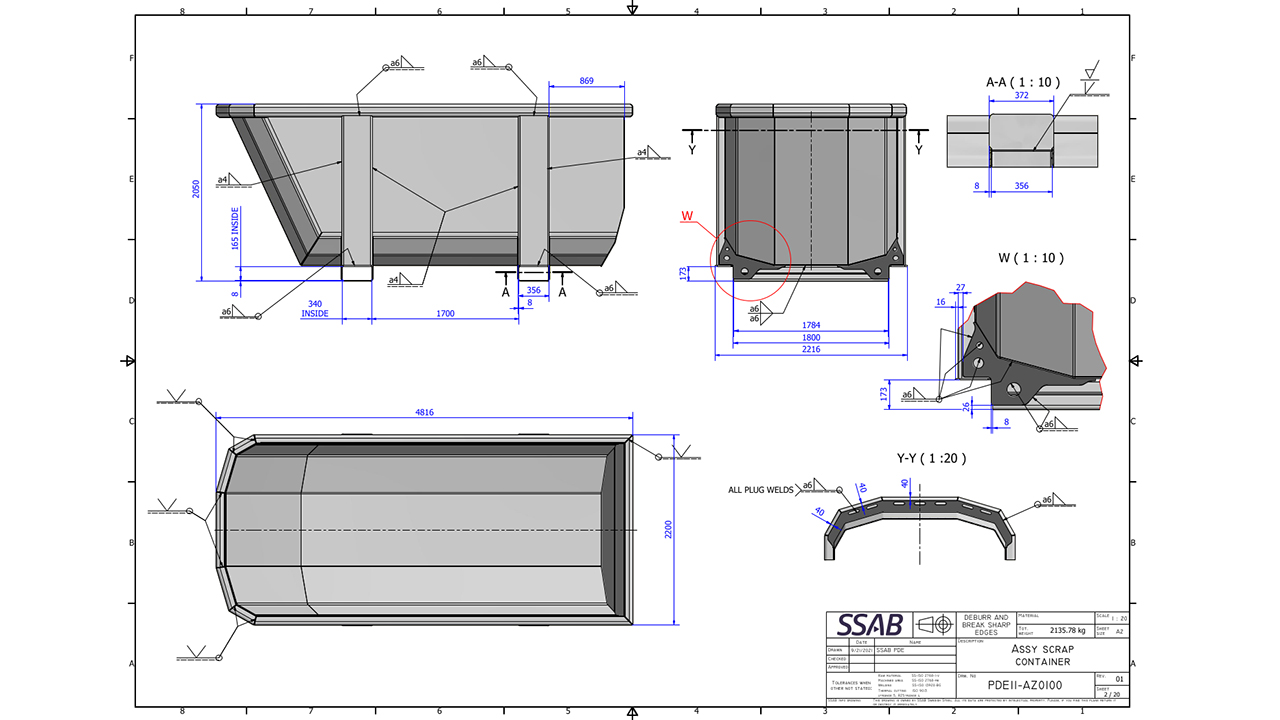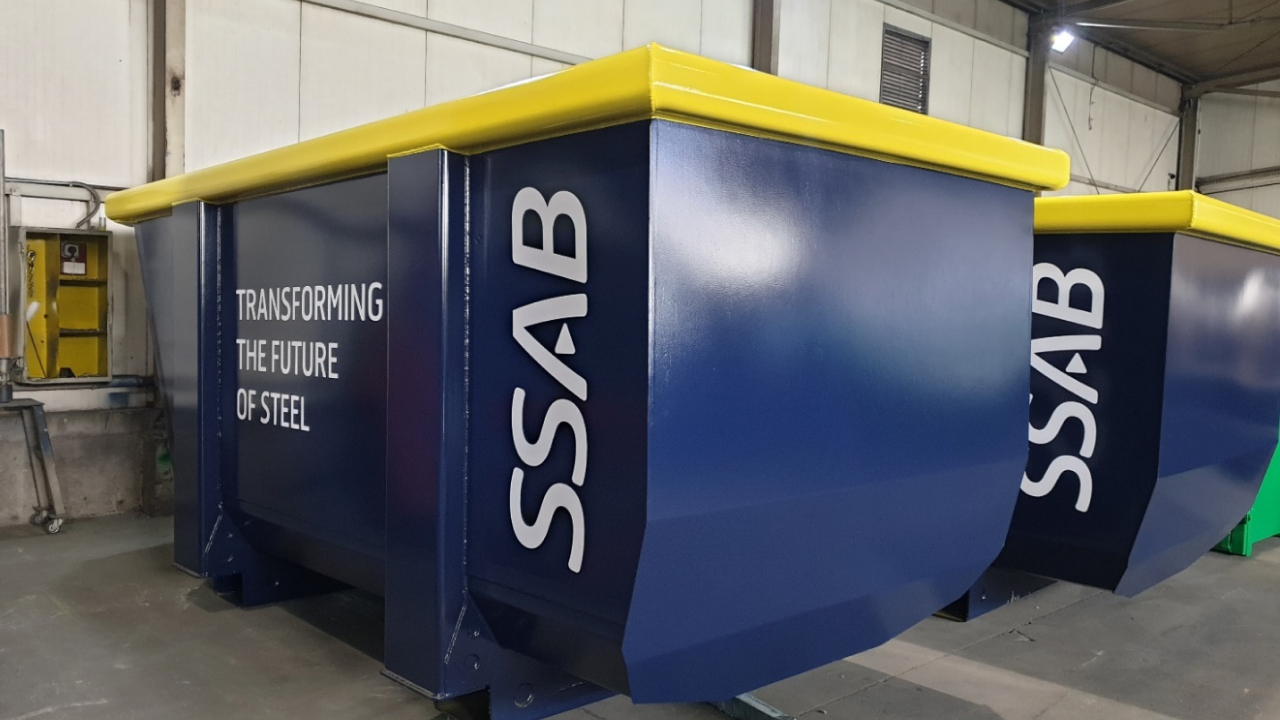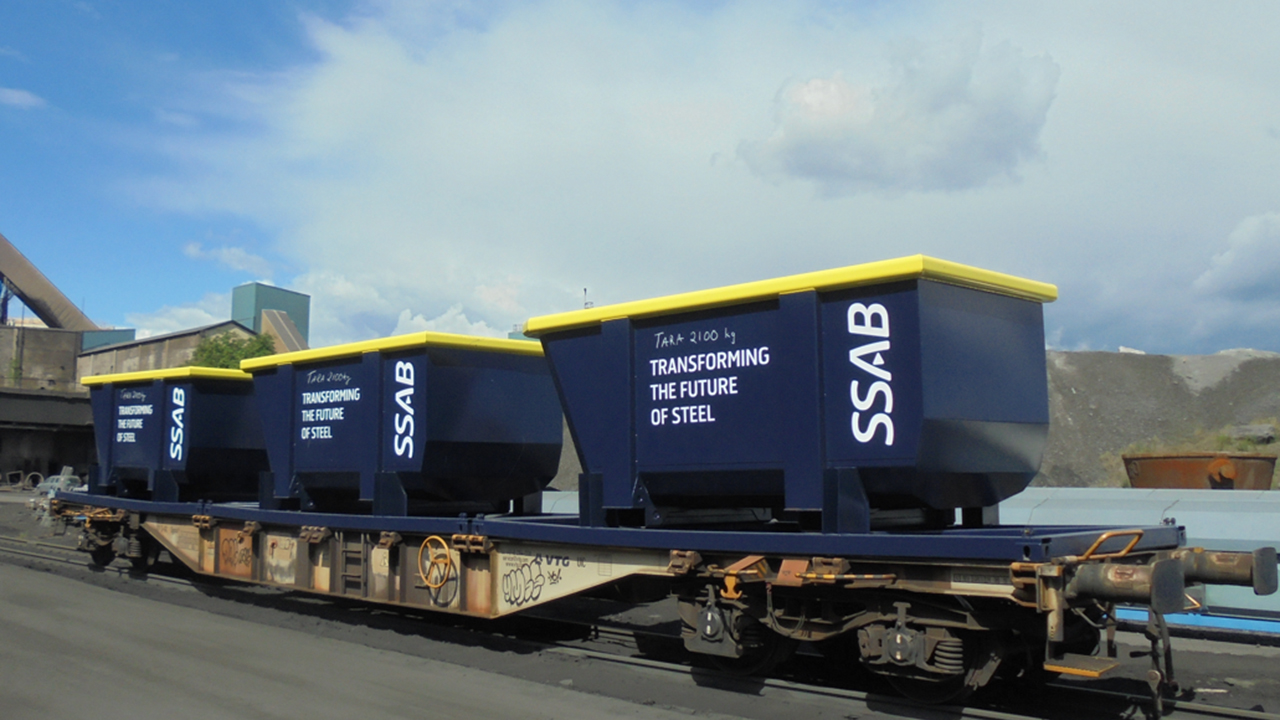Customer case
New scrap steel containers save time and US$140,000/year in operating costs
November 14, 2022 6 min read

Case details
The SSAB strip-rolling facility in Borlänge, Sweden produces heavy steel scrap as a by-product of converting steel slabs into coils and plates of cold- and hot-rolled high-strength steel. The heavy steel scrap was collected at the mill and loaded into a railroad gondola wagon — a heavy-duty, open-top car. The train would then take the scrap to SSAB’s mill in Luleå, in northern Sweden, to be recycled into new steel slabs.
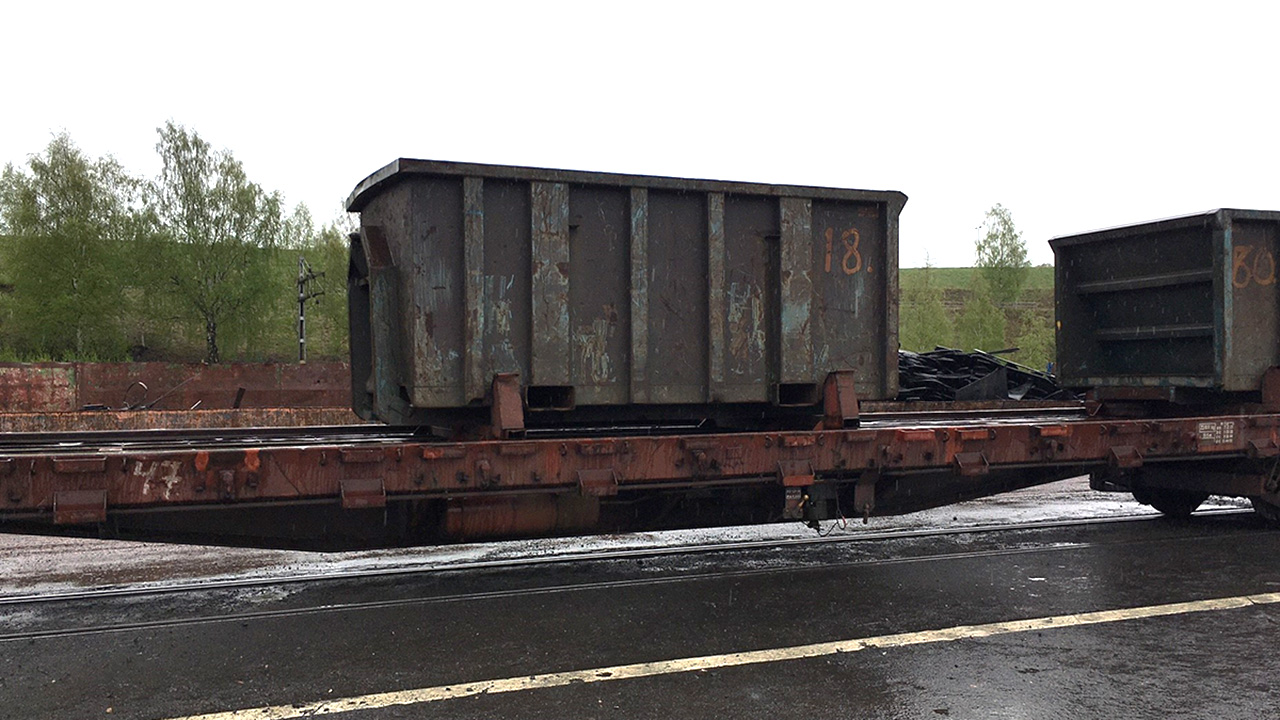
The previously used railroad wagon — a high-walled, open-topped gondola car — for carrying the heavy scrap steel.
